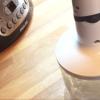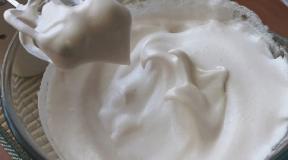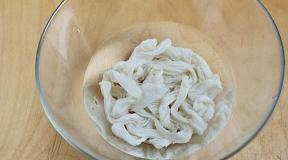Ichthyosis. Causes, symptoms, types and treatment of ichthyosis. Ichthyosis of the skin in children: causes, treatment with drugs, possible complications Treatment of ichthyosis of the skin
Ichthyosis (from "ichthyo" - fish) is a skin disease, the symptoms of which are immediately evident. Dry skin actively flakes off, dead cells accumulate and form characteristic gray-black or whitish scales. The skin begins to resemble fish scales. What it is? What to do about it?
Science knows not everything ...
Until now, scientists are struggling with the mystery of the etiology of ichthyosis. Until now, they do not have an unambiguous answer to the main question: what are the causes of this dermatitis? Most experts are inclined to think that the whole thing is in undetected gene mutations. The argument in favor of this version is the fact that ichthyosis is very often inherited, sometimes even in several generations.
Sometimes the disease manifests itself against the background of hormonal disorders, malfunctions thyroid gland... But today doctors cannot decipher these mutations. There are two more facts that complement the already bleak picture: the first symptoms of ichthyosis, as a rule, appear in early childhood, and the disease itself is chronic. That is, it will not be possible to completely recover from it.

However, this does not mean that you need to give up and indulge in despondency! You can fight exacerbations of ichthyosis! And the sooner you start, the more chances you have for long-term remission, as well as that complications will be avoided. With ichthyosis, nails and hair can change (their fragility and dryness increase). Therefore, we immediately go to the doctor, write down all his recommendations and strictly follow them, as well as begin special care for the skin of a sick child.
Don't know the reason? Let's fight the symptoms!
One of the main problems with ichthyosis is excessively dry skin. This provokes a whole host of troubles.
- First, your baby's skin may itch and itch.
- Secondly, the skin can crack, and bacteria can easily penetrate into the cracks.
- Thirdly, there is a high probability of exacerbations of the disease in winter, when dry frosty air negatively affects the skin.
Therefore, the basis for caring for a child's sore skin is regular hydration. In such a situation, it is reasonable to use not ordinary moisturizers, the effect of which quickly wears off, but special dermatological cosmetics containing emollients.

Emollients are special substances that allow you to restore the hydrolipid balance of the skin and maintain it at the proper level for a long time. Cosmetics "Emolium" contains emollients in the required amount to help a sick baby. All Emolium products were developed jointly with dermatologists and pediatricians, so they are absolutely harmless for children of any age. A wide range will allow you to choose exactly the product that is needed at the moment, whether it be a protective cream, bathing emulsion or shampoo. Moreover, a special triactive series will help not only moisturize the skin, but also protect it from bacteria, which is especially important in case of ichthyosis. Emolium products also quickly relieve itching and burning, stimulate the growth of epidermal cells and restore the natural barrier function of the skin. Cosmetics "Emolium" has passed all clinical trials, does not contain fragrances and dyes.
Life is just beginning!
Ichthyosis is a serious and unpleasant disease. But you can cope with its exacerbations - you just need to make an effort. The parents of a sick child will need determination, a willingness to go to the bitter end - even if this victory is not final, but only temporary. You still need to fight. In addition, with continued care, periods of remission can be prolonged. Your baby's happy life is worth it!
Ichthyosis is hereditary pathology skin. It is characterized by violations of the process of keratinization of the skin, namely the formation of hard scales, similar to fish. The disease has a number of varieties, differing in severity and method of treatment.
In most cases, pathology develops due to genetic mutations. In such babies, there is a violation of protein metabolism, and especially amino acids, which is manifested by their excessive accumulation in the bloodstream and urine (tryptophan, phenylalanine, tyrosine).
After the basic and fat metabolism deteriorates, the center of thermoregulation and respiration of the skin is disrupted.
Problems from the thyroid gland, gonads and adrenal glands join, the work of the child's immune system deteriorates.
The development of pathology is based on the theory that the normal synthesis of vitamin A is disrupted, as a result of which the skin becomes prone to increased keratinization and the formation of scales.
Varieties of the disease and symptoms
There are five main types of ichthyosis, namely:
- Vulgar or common;
- congenital;
- X-linked recessive;
- Epidermolytic;
- lamellar.
Children with ichthyosis are more likely to develop allergic diseases, bronchial asthma, pharyngitis, otitis media, and they are also less resistant to infectious pathologies. Problems in the work of the heart, liver and kidneys join the general picture.
Vulgar ichthyosis
Vulgar, or ordinary, ichthyosis is the most common form among all the others, this species can be inherited in an autosomal dominant manner.
The first signs of the disease can be found in a three-month-old child, or already at a later age, namely at two to three years.
The baby's skin becomes dry and rough due to the formation of a large number of grayish-white tightly attached scales, and horny plugs can be seen in the area of attachment of the hair follicle.
The skin on the face begins to peel off, but not in the same way as on the trunk and limbs, which are most susceptible to damage. Areas of the body that form folds of skin (genitals, armpits, elbows) are not affected by ichthyosis.
On the soles of the feet and palms, the mesh skin pattern becomes clearer.
The area and severity of skin lesions in each child is manifested individually. It is also possible for the development of the disease, when the skin begins to dry in places of its frequent flexion-extension, become thinner hair follicles, the structure of the nail plate is disrupted, which leads to its fragility.
The involvement of teeth (caries, unformed bite) and eyes (myopia, conjunctivitis) is not excluded.
Congenital ichthyosis
This form of the disease develops even in the womb, it can be detected immediately after the birth of the child. There are two types of congenital ichthyosis: Broca's erythroderma and fetal ichthyosis.
Fetal ichthyosis (harlequin fetus) has an autosomal recessive type of development. The skin of the fetus begins to be affected at 18-23 weeks of gestation. The baby's epidermis is covered with a shell, which consists of thick, hard plates of a grayish tint, which reach a thickness of 10 mm.
Lip folds are limited in movement, oral cavity narrowed, or vice versa stretched. The ears and nose are covered with scales, and because of this they are strongly twisted, the eyelids are twisted, hairline and nail plates often absent, the limbs are modified.
If the fetus is affected by a disease, then labor usually begins prematurely, and, unfortunately, the baby may be born dead.
Most of the young patients live only a few hours or days, since, when faced with the environment, their body undergoes changes that are incompatible with life.
Broca's erythroderma is characterized by severe redness of the skin.
X-linked recessive ichthyosis
X-linked recessive ichthyosis is characterized by a defect in placental microsomal enzymes. This form of ichthyosis affects only males.
The full flowering of all symptoms occurs within a few weeks after birth, very rarely immediately after birth. The baby's skin begins to gradually become covered with brown-black crusts, cracks form between them, and sometimes such skin is compared to crocodile or snake skin.
There are lesions on the part of the organs of vision, namely the development of juvenile cataract. With age, dementia, epileptic seizures, a decrease in the level of male hormones and abnormal skeletal development are possible.
 The epidermolytic form can be inherited in an auto-dominant manner. The epidermis of a newly born baby has a bright red color, as if it was scalded, and in addition, blisters form on it. different sizes with serous contents and erosion.
The epidermolytic form can be inherited in an auto-dominant manner. The epidermis of a newly born baby has a bright red color, as if it was scalded, and in addition, blisters form on it. different sizes with serous contents and erosion.
When you touch the skin, it almost instantly sloughs off (Nikolsky's symptom), the dermis on the soles and palms is compacted and has a whitish tint.
With the development of a severe form, hemorrhages in the skin and mucous membranes join, in such a situation everything ends with the death of the patient.
If there is no purpura, then there is a chance for further existence. As the child grows older, the number of blisters becomes less, sometimes their appearance is accompanied by elevated temperature body. In the area of skin folds, increased keratinization is noted.
Ichthyosis affects not only the epidermis, but also other vital systems of the body (cardiovascular, endocrine, nervous).
Lamellar ichthyosis
 The lamellar form can be inherited in an autosomal recessive manner. The skin of a newborn baby is covered with a thin layer of film with a yellowish-brown tint, and then it is transformed into plates that remain for the rest of the child's life. The epidermis on the face is red, taut and flaky.
The lamellar form can be inherited in an autosomal recessive manner. The skin of a newborn baby is covered with a thin layer of film with a yellowish-brown tint, and then it is transformed into plates that remain for the rest of the child's life. The epidermis on the face is red, taut and flaky.
The hairy part of the head is covered with small plates, the shape of the ears is modified. Overcompensated fast growth nails and hair, but despite this, the development of complete baldness is possible.
Such patients are characterized by eversion of the eyelids, which is accompanied by a fear of light and keratitis. In rare cases, tooth decay and dementia develop.
Sometimes the degeneration of the film into large plates is possible, which tend to disappear even in infancy, and then the skin becomes normal.
Diagnostic measures
The correct diagnosis is made after a thorough examination of the baby's skin and appropriate tests, since very often the congenital form is confused with Ritter's dermatitis and Leiner-Mousse's erythroderma.
Desquamative erythroderma of Leiner-Mousse can be detected in the first two months of a baby's life: the epidermis is inflamed and slightly swollen, the skin folds are peeling. And in just a few days, all skin integuments are involved in this process.
Ritter's dermatitis develops on the seventh day after birth. The epidermis is red, flakes off in the area of the baby's natural openings (navel, anus). Further, the process spreads to the whole body, and the scales begin to fall off with the formation of erosion. Additionally, the body temperature rises, dyspeptic symptoms and toxicosis join.
The X-linked and ordinary form can be confused with celiac disease, which is also characterized by peeling of the epidermis, a violation of the structure of the nail plate and hair follicles.
Treatment of the disease
Depending on the degree of skin lesions, treatment can be carried out at home or under the supervision of a dermatologist in a hospital setting. Small patients are prescribed vitamins of group B, A, E, PP and ascorbic acid for a very long time.
Used drugs that have lipotropic properties - vitamin U, methionine, lipamide. To stimulate the immune system, drugs are used that contain aloe extract, iron, calcium, and a blood plasma transfusion procedure is also used.
For drug treatment to have a positive effect, you must carefully follow all the recommendations of the attending physician.
Use is possible hormonal drugs if indicated (insulin, thyroidin). In congenital form, a combination of glucocorticosteroids with anabolic steroids is used, additionally ascorbic acid, B vitamins, potassium preparations and antibacterial agents are added as needed.
If eversion of the eyelid is present, then an oil solution of retinol acetate is instilled into the eyes. This treatment is carried out in a hospital for two months, with constant monitoring of the biochemical blood test.
Gradually, the doses of glucocorticosteroids are reduced and brought to complete cancellation already in outpatient treatment, blood and urine parameters are periodically examined, and smears are taken from the mucous membranes of the nose and throat. Also shown is the intake of vitamins B and A for nursing mothers.
A very important factor in the favorable course of the disease is the use of local funds for baby skin care, namely baths with potassium permanganate solution in a ratio of 1: 15000. After the bath, the skin is treated with a cream with the addition of vitamin A or with Delight, Dzintars creams.
Medical and genetic examination of future parents is the main method of preventing the birth of sick babies, including those with ichthyosis of the skin. A geneticist determines the degree of risk of having a child with a particular disease.
At present, the fight against hereditary diseases is becoming increasingly important. Often people do not attach importance to minor changes in the condition of the skin, however, even peeling, which is ordinary at first glance, can become a reason for contacting a specialist. This symptom can be a consequence of a lack of vitamins, or a sign of a more serious illness.One of these dangerous diseases is ichthyosis. It leads to keratinization of certain areas of the baby's skin.
Hereditary skin disease - congenital ichthyosis
Features of the disease
Ichthyosis is a disease in which metabolic processes of the body are disrupted. Violation of protein metabolism, an increase in the content of amino acids and lipids in the blood and urine lead to a deterioration in basic and lipid metabolism. As a result, heat exchange is disturbed, the skin “breathes” worse - the supply of oxygen to the body through the skin decreases.
Malfunctions of the thyroid gland, gonads and adrenal glands occur. Sweating is impaired. As a result, immunity decreases, metabolism worsens. These processes lead to the appearance of the following symptoms:
- redness and irritation appear on the skin;
- dry skin cracks (we recommend reading :);
- persistent inflamed areas are formed.
The phenomena listed above lead to the formation of hard scales, resembling fish scales, which is why the disease got its name. Scales are difficult to separate from the skin, interfere with the child, create discomfort.
Forms of ichthyosis of the skin and characteristic symptoms
The disease is classified into several forms:
- Common or vulgar ichthyosis is the most common form. It is detected before the age of 3 months, but the progression of the disease is possible up to 3 years. Vulgar ichthyosis primarily affects the delicate skin of the armpits, knee and elbow folds, in the groin, but can be observed anywhere on the body. The disease begins with drying of the skin, then it becomes covered with small crusts of a whitish or grayish color. At the same time, children have dental problems, the condition of the nails and hair worsens, and conjunctivitis occurs. The disease weakens immune system, opens the way for infection. In the future, damage to the cardiovascular system and liver is possible. However, an abortive course of the disease is not excluded, when recovery occurs abruptly, without going through all the stages.
- Congenital ichthyosis occurs during intrauterine development, at 4-5 months of pregnancy. The skin of the newborn is covered with black or gray corneous crusts already at the time of birth. The disease affects both the development of internal organs and the appearance of the baby. The mouth becomes distended or narrowed, making feeding difficult. The ears have an unnatural shape, the eyelids twist. Possible skeletal disorders, the formation of membranes between the fingers, the absence of nails. The disease sometimes leads to early birth, fetal death, death of a newborn in the first days.
- A severe form of ichthyosis is lamellar. The baby is covered with large plates that create a shell. The course and consequences are very serious.
- The recessive form is characteristic exclusively for men, transmitted by the x chromosome. It is possible to determine the presence of the disease in the 2nd week of life, sometimes even earlier. The body is covered with large dark brown plates, cracks are located between them. The disease is accompanied by severe consequences in the form of mental retardation, epilepsy, and structural disorders of the skeleton.
- Epidermolytic ichthyosis is also congenital. The body of a newborn is bright red. The crusts are easily removed, hemorrhages in the skin are possible, leading to the death of the baby.
 Photo of the skin of a newborn with ichthyosis
Photo of the skin of a newborn with ichthyosis For less severe course disease, the area of red areas is reduced, but relapses are possible. From the age of 3, dense gray growths form on the skin folds. The disease is accompanied by damage to the endocrine, nervous and cardiovascular systems, spastic paralysis, anemia, mental retardation and infantilism.
The severity of the disease depends on the depth of the gene mutation. Sometimes the only manifestation of the disease is dry skin and slight peeling. The most common forms of the disease are common and recessive in children.
Causes of the disease
The main cause of occurrence dangerous disease considered a gene mutation. The manifestations of the disease have been observed from generation to generation. Keratinization of the skin is caused by a failure of biochemical processes in the body.
Medicine cannot yet determine the causes of gene mutations. However, it is known that violations of protein metabolism lead to the accumulation of lipids and amino acids in the blood. The activity of enzymes responsible for oxidative processes in the skin increases. Skin respiration and thermoregulation are impaired.
Some forms of ichthyosis are acquired and affect a person after 20 years. Acquired ichthyosis is caused by diseases, hypovitaminosis, taking a number of drugs.
 Acquired ichthyosis may appear after age 20
Acquired ichthyosis may appear after age 20 What is the danger of skin disease in children?
Ichthyosis is a skin disease that interferes with the normal functioning of the entire body. Fatal outcome in congenital ichthyosis of newborns is a common phenomenon. However, even in cases where the child does not die, the disease leads to life-threatening pathologies.
Disturbances in work nervous system in children, they are fraught with developmental delays, various forms of mental retardation, and threaten with epilepsy. The disease affects the structure of the skeleton, deforms the limbs, leaves an imprint on the appearance of the child.
The only way to avoid trouble is planning a pregnancy. Those people who have at least one family member with this hereditary disease should undergo a thorough examination. If there is no confidence in a normal pregnancy, it is better to refuse to give birth to a child, congenital ichthyosis cannot be treated.
Child care rules and treatment of ichthyosis
Modern medicine is unable to offer a treatment that will help a child recover. However, this does not mean that it is impossible to alleviate his condition. In the arsenal of dermatologists there are a number of tools that will help the baby.
It can be:
- Drug therapy, taking vitamins A, B, E, C. Frequent repetition of vitamin therapy courses can ease the course of the disease, avoid exacerbations. The baby is also prescribed corticosteroid hormones, drugs containing lipamide and vitamin U, which soften the skin and reduce keratinization. Sometimes donated blood plasma is transfused to the child.
- Local treatment consists of stimulation metabolic processes skin. These can be physiotherapeutic procedures: ultraviolet irradiation, mud therapy, heliotherapy. Shown different kinds baths: starch and carbonic baths with the addition of vitamin A.
- At home, it is necessary to perform thorough skin care, carry out drug treatment as prescribed by your doctor. After consulting with a specialist, you can supplement the treatment with traditional medicine... Healing ointment based on St. John's wort oil, herbal infusions for ingestion and skin care are recommended.
The result of the treatment is highly dependent on the form of the disease. Vulgar and X-linked recessive ichthyosis does not threaten a baby's life if the treatment is done on time and exactly as prescribed by the doctor.
Often people do not take seriously minor changes in the condition of the skin. But, the reason for going to the doctor can be not only redness, itching, purulent inflammation and any neoplasms, but also the usual peeling of the skin. This may be due to a lack of vitamins or a sign of a more serious diagnosis, such as ichthyosis.
Features of the diagnosis of ichthyosis and its symptoms
Ichthyosis is a genetic skin disorder. It is characterized by a violation of the process of keratinization of the skin - a failure occurs in the epithelial tissue during the production of the horny substance, which contains keratohyalin, keratin and fatty acid... With the development of a pathological process - hyperkeratosis, peeling of the skin begins. Depending on the severity and stage of the disease, light husks may be observed, or a layer resembling fish scales may form. Such formations can be gray, brown, dark, or flesh-colored.
As a rule, this is an independent disease. But as an additional symptom, ichthyosis can be observed with the following diagnoses:
- Leiner's erythroderma;
- dermatitis Ritter;
- one of the varieties is erythrodermic;
- the following syndromes - Ore, Jung-Vogel, Refsum, Sjogren-Larsson and some others.
Often, to clarify the diagnosis, an external symptom is sufficient - the appearance of such roughness on the skin. As a rule, they do not appear on the elbows and knees, also in the groin area. Sometimes the disease is accompanied by itching and painful sensations on the skin. Additional symptoms may include decreased sweating, stratification or reduction of nails, cracks on them, increased cholesterol, impaired metabolism of proteins or fats in the body.
The peculiarity of the disease is its exacerbation in the winter season, when exposed to dry frosty air, while in warm countries with a humid climate or in the summer, some improvement may be observed. But this factor should not override compliance medical advice to combat a similar disease. Often with insufficiency clinical picture and anamnesis, a histological examination, a blood test, a comprehensive examination by specialized doctors are carried out.
Reasons for the diagnosis of ichthyosis
The main reasons for the appearance of this disease - in the human body, there is a mutation of genes or a violation of their expression - the transformation of hereditary information into proteins or ribonucleic acid. All these changes in the functioning of the body are inherited. Depending on the form of the disease, these changes in humans proceed in different ways. There may be a production of defective keratin, a lack of a product such as sterolsulfatase, as well as hyperplasia of the basal layer of the epidermis and other similar processes.
Acquired ichthyosis is a rare case. It can occur due to a lack of vitamins, thyroid or adrenal gland problems.
Common forms of the disease ichthyosis
There are several types of ichthyosis, the manifestation of which depends on hereditary factors. Here is some of them:
- harlequin ichthyosis;
- lamellar;
- vulgar;
- epidermolytic;
- x-linked.
Sometimes this diagnosis is also called fetal ichthyosis. Children with this diagnosis, as a rule, are born prematurely and with low weight. Outwardly, the diagnosis is manifested not only by peeling of the skin, but also by changes and redness of the eyelids, ears, mouth, limitation of movement of the joints of the arms and legs. The skin of the newborn is covered with gray or brown scales with thickenings and cracks. 
A similar disease appears due to a gene mutation ABCA11- its polypeptide chain is shortened, as a result of which irreversible changes occur during the formation of the fetus. As a result of this process, the functionality of lipids is impaired - they are not capable of forming the stratum corneum. Ichthyosis is most often seen after birth, but, as a rule, during an ultrasound scan, some signs of the development of abnormalities can be tracked, especially if the parents have a hereditary predisposition. An ultrasound examination of the condition of the fetus is required - the development of the mouth, ears, nose, the profile of the face is assessed, and swelling of the extremities is also possible.
Most often, the outcome of the disease is unfavorable - newborns with such a diagnosis rarely survive. In some cases, timely therapy can prolong the life of the child for some time.
Most often, such a diagnosis is made immediately after the birth of a child. The baby's skin looks bright red - erythroderma, a film is observed on it, which makes it difficult for the child to breathe and eat. This condition is also called a colloidal fetus. After a while, the film turns into scales that remain for life or disappear into childhood leaving no complications. If the scales have not disappeared, then in adulthood they increase in size, while the redness of the skin subsides. Painful cracks may appear on the feet or palms, and slight peeling on the face. Perhaps the development of dementia - acquired dementia. 
Often, the presence of a film on the body of a newborn is accompanied by a change in the eyelids and lips, which can also persist throughout life. The reason for this diagnosis is also a hereditary gene mutation, which can manifest itself in both males and females.
A similar disease manifests itself in the period of life from 3 to 12 months, both in boys and girls. It is accompanied by horny plugs on the hair follicles and a decrease in the granular layer of the skin - while the size of keratohyalin granules in its cells decreases. Diagnosis will require a histological examination and a typical history.
Vulgar ichthyosis is manifested by dryness and peeling of the skin in the forearms, back, and legs. At the same time, there is no irritation on the buttocks, inner thighs, under the knees and armpits. The most pronounced stage of the disease is during puberty, the manifestation of the disease decreases with age. Also, an exacerbation of the disease occurs in the cold winter, in a warm mild climate, the symptoms of the disease become less pronounced.
This diagnosis is often referred to as congenital bullous erythroderma of Broca... It manifests itself immediately at birth or in the first months after childbirth in the form of bubbles of different sizes with specific contents on the red skin, which eventually break open, forming erosion, and over time epithelized... Scales are usually linear in shape and dark shades, can be located in large folds or on the neck. Healthy skin may appear between the affected areas, which will be one of the symptoms of epidermolytic ichthyosis. As we age, the number of blisters may decrease, but the number of flakes or scales increases. 
If the infection gets on the skin, the patient's condition may worsen. A typical change in the eyelids for ichthyosis - their eversion, is not observed. An additional symptom is whitish skin of the feet and palms with a thickening effect. If only these parts of the body are affected, another type of ichthyosis with different gene mutations is possible. To clarify the diagnosis, an external examination, anamnesis and the results of a histological examination are required.
This type of ichthyosis manifests itself in males in the first months of life. Most often, it looks like large skin scales in the form of plates of a black or dark brown hue. Sometimes such scales can lay on top of each other, creating a layer of keratinized skin in the form of a shell. Formations are observed on the back of the neck, scalp, buttocks and thighs, and are absent on the face, feet and palms. In some cases, corneal opacity is possible, therefore, in addition to a dermatologist, sometimes a comprehensive examination by specialized doctors, including an ophthalmologist, is required. 
A blood test may be required to confirm the diagnosis, as well as family genetic information and a general history. Relief of the disease can occur during the summer period of the year, while in a warm, humid climate. Frosty dry air can aggravate the disease. As a rule, no positive dynamics is observed with age.
Ichthyosis of the skin in children
If you find any suspicious formations on the skin in the form of scales or slight peeling in a child, you should contact a medical institution.
A similar hereditary disease can manifest itself during the development of the fetus in the womb at about the fourth or fifth month. At the same time, children are born with an altered skin structure - the presence of shells and scales of various sizes. The disease can affect the mouth, ears, eyelids, which can affect vision and food intake. With such a diagnosis, the appearance of membranes on the fingers and deformation of the skeleton are possible.
Most often, the disease manifests itself most actively before the age of three. The areas of peeling of the skin eventually turn into keratinized skin with the so-called fish scales of a gray or dark shade, reddening of the skin with the presence of a film can be observed. The lines on the palms become more pronounced. The disease may be accompanied by itching, burning, painful sensations when separating scales.
In addition to the external manifestation of the disease, the following changes are possible:
- Deterioration of the structure of hair and nails - their stratification and fragility.
- Conjunctivitis of the eye.
- The development of myopia.
- Allergic reactions.
- Kidney disease.
- Tooth decay and destruction of tooth enamel.
- Heart failure.
In such cases, you need to immediately start treatment on the advice of a doctor and under his supervision. For newborns, early therapy is provided - the child needs to maintain an optimal temperature and humidity, for which he is placed in a jug. A comprehensive examination of the patient is carried out by a surgeon, ophthalmologist and other specialized specialists. Further, additional treatment is prescribed. It will be chosen depending on the exact diagnosis - the type of ichthyosis and the severity of the disease.
When treating a child, it is important to take into account the psychological aspect, because an aesthetic change in the skin can affect his communication with peers.
Ichthyosis treatment
The outcome of the disease in most cases depends on the severity of the disease and the degree of gene mutation. With a mild degree of mutation and timely therapy, a successful treatment is possible, or at least an improvement in the patient's quality of life. A less favorable result is predicted in case of metabolic disorders and damage to other body systems, in addition to its genetic changes.
As a rule, treatment consists of moisturizing the skin - this is required to reduce dryness of the skin and reduce cracking. Appoint medicinal ointments, creams, moisturizers based on lanolin or petroleum jelly, carry out additional keratolytic therapy. In some cases, baths with special solutions can be prescribed - soda, starch, salt, sometimes with the addition of chamomile or sage.
Of the drugs sometimes prescribed vitamin complexes- vitamins of the group are important for the skin A, E, WITH, V, if necessary - antibiotics, medicines to maintain the function of the thyroid gland, antifungal agents, iron preparations. It is important to maintain the body's immunity. So, in case of its weakening, immunomodulatory drugs can be recommended. In the course of treatment, it is required to regularly take urine and blood tests.
- prolonged exposure to the sun, overheating of the skin is not recommended;
- using soap can contribute to additional dryness of the skin;
- it is worth limiting the time spent in the cold - dry cold air can aggravate diseases;
- sanatorium treatment in places with a warm, mild climate will be favorable, in some cases swimming in the sea is allowed.
In any case, you cannot self-medicate, especially with such a serious diagnosis. A doctor's consultation and strict adherence to his recommendations can significantly improve the patient's quality of life and prevent the development of irreversible consequences.
When diagnosing ichthyosis, it is important to avoid hypothermia and prolonged exposure to frosty air, and also avoid overheating of the skin in the sun.
For any skin problems, you should consult a doctor, widespread peeling is no exception. An unpleasant diagnosis can be hidden behind it - ichthyosis. Due to its hereditary origin, treatment can be quite lengthy, difficult, and requires a lot of patience. It is important not to give up, because modern medicine offers many ways to make the patient's life easier and better.
Related Articles

ICTHIOSIS (ichthyosis; Greek, ichthys fish + -osis; syn.: fish scales, alligator skin, crocodile skin, diffuse keratoma, sauriasis) - a type of keratosis, characterized by a generalized violation of keratinization of the skin.
Descriptions of skin lesions characteristic of Ichthyosis are found already in the oldest written sources (in China in the 3rd - 2nd millennium BC, in Egypt in the 2nd - 1st millennium BC), as well as somewhat later - in Hippocrates and dr.
Etiology and pathogenesis
Ichthyosis is a hereditary disease; clinical varieties of ichthyosis are caused by various gene mutations, the biochemical effect of which has not yet been deciphered. In ichthyosis, violations of protein and amino acid metabolism, changes in the activity of some enzymes (for example, an increase in the activity of oxidative enzymes in the epidermis), dysimmunoglobulinemia, etc. are noted. great importance deficiency of vitamin A, as well as endocrinopathies (insufficiency of the function of the thyroid gland, gonads, adrenal glands). In some cases, ichthyosiform (resembling ichthyosis) skin changes of acquired genesis are observed, in relation to which the term "acquired ichthyosis" is sometimes used. These changes in the skin, as a rule, are symptomatic and can be a manifestation of hypovitaminosis, diseases of the hematopoietic system, senile involution of the skin, etc.
Classification
A large number of varieties of Ichthyosis have been described. For a long time, the main division was I. into ordinary (vulgar), which usually manifests itself during the first months of life, and congenital, with which the child will be born, as it were, in a shell of cutaneous horny layers, with signs of congenital deformities and underdevelopment of a number of organs and systems; as an independent form of congenital I., congenital ichthyosiform erythroderma is distinguished). There is no generally accepted classification of I. Depending on the wedge, features, Ch. arr. the colors and nature of the horny layers, also distinguished black, white, mother-of-pearl, serpentine and other varieties of I. In 1964, A. Greither distinguished the types of inheritance different forms; further Wells, Kerr, Schneider and Konrad (R. S. Wells, S. Century Kerr, 1965; U. W. Schnyder, V. Konrad, 1968) took the types of inheritance as the basis for classifications.
On the basis of modern clinical and genetic and pathomorphol, I.'s data can be divided into hereditary and acquired.
Hereditary ichthyosis includes the following forms: 1) ordinary I., in which there is an autosomal dominant type (actually ordinary I.) and recessive X-linked I., which is an independent form that has not yet received its wedge, name; 2) I. fruit; 3) congenital ichthyosiform erythroderma), subdivided into lamellar I. (non-bullous type) and epidermolytic I. (or hyperkeratosis - bullous type); 4) one-sided I .; 5) linear envelope I .; 6) spiny I .; 7) syndromes, including I. as a symptom.
Acquired ichthyosis, or rather ichthyosiform states, are subdivided into 1) symptomatic, 2) senile, 3) discoid I.
Common ichthyosis
Common ichthyosis - the most common form, is inherited autosomal dominantly; usually develops at 3 months. life or somewhat later (up to 2-3 years).
Pathohistology: Hyperkeratosis with thinning or complete absence of the granular layer - retention hyperkeratosis (c-m.). The prickly layer is normal or somewhat reduced. In the papillary layer of the dermis, hair follicles and sebaceous glands somewhat reduced, perivascular lymphocytic infiltration of moderate severity. At electron microscopic examination, there is a low differentiation of tonofibrils, a violation of the synthesis of keratohyalin, expressed in a decrease and atypia of keratohyalin grains in the granular layer, an increase in ribosomal activity in the epidermis.
Histochem, studies revealed a decrease in the amount of DNA in the nuclei of cells of the basal and prickly layers, pyroninophilia of the cytoplasm of spinous cells, caused by a violation of protein, in particular amino acid, metabolism.In the stratum corneum, the content of amino groups, tryptophan, SH-groups and glycoproteins, a deficiency fatty to-t... In skin scales, an increase in the amount of lysine, leucine, isoleucine, ornithine and a decrease in the amount of cetruline were noted.
The clinical picture. Due to hyperkeratosis and constant scaling, the skin becomes dry, rough to the touch, wrinkled, and dirty gray in color. Patol, skin changes are especially pronounced in the elbow area, knee joints, the extensor surface of the shoulders, forearms, legs (printing. Fig. 1-3) and thighs. The skin of large folds (elbow and popliteal folds, armpit, intergluteal fold) and genitals, as a rule, is not affected. On the forehead and cheeks, hyperkeratosis usually appears only in adults. Skin lines and folds are emphasized on the palms and soles. On the scalp - pityriasis peeling, the hair becomes somewhat thinner, hair thinning is possible. Various trichodysplasias have also been described: bamboo-like hair, knotty brittleness, and razvorocheniya hair cortical layer. The nail plates become dry, brittle, rough with cross striation, deformed, onychogryphosis (nails resembling bird claws) may develop. There is a decrease in fat and sweating in areas of hyper-keratosis; dermographism and muscle-hair reflex are poorly expressed or not caused. Sometimes itching, chilliness worries.
Ordinary I. lasts all life, the patient's condition worsens in the winter and somewhat improves in the summer. Wedge, I.'s manifestations weaken somewhat during puberty and in adulthood. The general condition of patients, as a rule, does not suffer. Ordinary I. is often combined with diseases of allergic genesis - neurodermatitis, eczema, bronchial asthma, vasomotor rhinitis, as well as psoriasis, pyoderma, cryptorchidism, etc.
Depending on the type and degree of formation of scales, the following wedge, options for ordinary I. perifollicularly located small pityriasis scales. If you run a spatula or fingernail over the skin, a white streak of flour-like peeling appears. The skin is easily irritated, especially when washed with soap, and is prone to eczematization; b) I. simple - characterized by small scales of a grayish-white color, the central part of which is tightly attached to the skin, the stratum corneum of the skin resembles cracked parchment; c) I. brilliant - differs in transparency and tenderness of the scales, located in the form of a mosaic, Ch. arr. on the limbs; d) I. white - characterized by white scales, which give the impression that the skin is sprinkled with flour; e) bullous I. - a rare atypical variety, described by Siemens (H. W. Siemens, 1937), characterized by the appearance of blisters with serous contents against the background of ichthyosis skin changes; f) localized I. is rarely observed - a limited area of the skin is affected; transitional and mixed versions are possible.
Ichthyosis X-linked recessive
Ichthyosis X-linked recessive is isolated as an independent form from ordinary I. using genetic studies by Cockayne (E. A. Cockayne, 1933). Wedge, and gistol, features of this form I. were clearly described by Wells (1965), Kerr (1966), Kuokkanen (K. Kuokkanen, 1969) and others. Only men are ill; women (hetero-zygotes) pass the mutant gene to their sons; the disease is very rare.
Pathohistology: proliferative hyperkeratosis (hyperkeratosis with granulosis), small focal acanthosis (see), expressed hypertrophy of the papillae of the dermis, perivascular lymphocytic infiltrates. In the dermis, the number of sebaceous glands is normal, sweat is reduced. In electron microscopy, keratohyaline grains of normal structure are increased in number. There was a decrease in serine in skin scales.
Clinical picture... The disease manifests itself at birth or a few weeks after birth. In patol, the process involves the entire skin, in 30% of cases, including folds. The palms and soles are usually not affected. In children, the process involves the scalp, face, neck; with age patol, changes in the indicated places weaken, however, changes in the skin on the abdomen, chest, extremities intensify. The scales are usually large and dark. Hyperkeratosis is especially intensified in the area of the extensor, surfaces of the limbs, on the elbows and knees (printing. Fig. 4-6).
It is believed that clinically this form of I. is usually manifested in the form of black I., characterized by the brownish-black color of scales tightly sitting on the skin, resembling shields; serpentine I., characterized by thick dark scales (plates), numerous small cracks in the stratum corneum, and large - up to 1 cm shields of a dirty gray or brown color, which makes the skin resemble snake; horny I. - the skin resembles the shell of a lizard. In some cases, skin lesions may resemble ordinary I. Hair dystrophy is often observed; development of cataracts is characteristic; sometimes mental retardation, epilepsy, hypogonadism, skeletal anomalies are observed.
Fetal ichthyosis
Fetal ichthyosis (syn.: Harlequin fetus, colloidal fetus, malignant keratoma) develops at 4-5 months. pregnancy. Autosomal recessive inheritance.
Pathohistology- proliferative hyperkeratosis, acanthosis, lymphocytic infiltrates in the papillary dermis.
The clinical picture. The skin of a newborn is covered with a corneous carapace, consisting of thick gray-black corneous scutes, up to 1 cm thick, smooth or serrated, separated by grooves and cracks. The lips are inactive, the mouth of the child is stretched or so sharply narrowed that it is barely passable by the probe. The nose and ears are deformed, the eyelids are twisted. The limbs are ugly (clubfoot, clubfoot, contractures), hair and nails are absent or dystrophic. Pregnant women often have preterm labor; children with I. can be stillborn, while most of these children die a few hours or days after birth as a result of the addition of a secondary infection, respiratory failure, cardiac and renal failure, inferiority of organs and systems.
Ichthyosiform congenital erythroderma
Ichthyosiform congenital erythroderma (syn.: Congenital ichthyosiform erythroderma of Broca, generalized hyperepidermotrophy of Vidal, congenital hyperkeratosis of Unna, hyperkeratosis of ichthyosiform generalized or total Darrieus, keratosis congenital red congenital Rile's keratosis) clinically divided into two types - non-bullous and bullous. Many authors consider the non-bullous variety to be identical to lamellar I., the bullous variety is often called by modern authors epidermolytic hyperkeratosis, or ichthyosis.
Lamellar ichthyosis
Ichthyosis lamellar is described by Seligmann (E. Seligmann, 1841) under the term "epidermal desquamation of newborns", the name "lamellar ichthyosis" was introduced by Grass and Torok (I. Grass, L. Torok, 1895). Autosomal recessive inheritance.
Pathohistology: proliferative hyperkeratosis, sometimes parakeratosis (see), moderate acanthosis, hypertrophy of the papillae of the dermis, an increase in the number of sebaceous and sweat glands, perivascular infiltrates. Electron microscopic examination - an increase in the number of keratinosomes in the upper part of the prickly layer, poorly contoured tonofibrils, large keratohyalin granules; in the epidermis there is an increase in the cementing intercellular substance, a large number of mitochondria in the granular layer. Histochemical studies revealed an increase in the content of oxidative enzymes (acid phosphatase) in the epidermis.
The clinical picture. The disease manifests itself at birth in the form of the so-called. colloidal fetus. Reed (W. Reed, 1972) et al, argues that a colloidal fetus can be a manifestation of not only lamellar I., but also epidermolytic I., as well as I., linked to the X chromosome, Sjogren-Larsson syndrome, etc. Skin at birth, the baby is completely covered with a thin dry yellowish-brownish film resembling collodion. In some cases, this film, having existed for a certain time, turns into large scales (lamellar exfoliation of newborns) and completely disappears in infancy; the skin remains normal throughout life. In most cases, the scales formed from the film remain for life, the skin under them is bright red (erythroderma) - actually lamellar I. (printing. Fig. 7-10), a wedge, the picture of which coincides with the one described earlier non-bullous type of ichthyosiform erythroderma. However, some authors question their full identity.
The lesion of the skin is continuous, and the change in the skin in the folds is often more pronounced. The skin of the face is red, taut, peeling, hairy part the head is covered with abundant scales. Excessive sweating is observed. Hair and nails usually grow rapidly (hyperdermotrophy), the nail plates are deformed, thickened, subungual keratosis develops, as well as keratosis of the palms and soles (printing. Fig. 11 and 12). Cases of total alopecia are described (see). With age, erythroderma decreases, and hyperkeratosis increases. Characterized by congenital bilateral eversion of the eyelids (see), which is one of the diagnostic signs, to-rum is often accompanied by keratitis (see), lagophthalmos (see), photophobia (see). Sometimes there are dental abnormalities, mental retardation.
Epidermolytic ichthyosis
Epidermolytic ichthyosis (synonym: bullosa congenital Broca's erythroderma, acanthokeratolysis universal congenital Nikolsky, congenital epidermolysis ichthyosiform, epidermolytic hyperkeratosis) is inherited autosomally dominantly.
Pathohistology. The stratum corneum is thickened, with areas of parakeratosis, granulosis, acanthosis, signs of dyskeratosis - round bodies and grains (see. Diskeratosis). In the spinous layer - intercellular edema, in the middle and upper sections, the spinous cells contain small and large basophilic granules and pyknotic nuclei, the boundaries of the cells are indistinct. The papillae of the dermis are hypertrophied. In the upper layer of the dermis, there is a pronounced inflammatory infiltrate. Electron microscopy in the stratum corneum revealed the vertical orientation of corneocytes and signs of incomplete keratinization of cells, in the granular layer - a large number of large cells with a pronounced areola around the nuclei containing basophilic keratohyalin. In the prickly layer, there is an increase in the formation of tonofibrils, ribosomes, mitochondria. Tonofibrils in the form of wide strands, lumps, perinuclear accumulations. The structure of the desmosomes is not disturbed, disorders of the desmosome-tonofibril complex are not detected, unlike other acantholytic dermatoses (pemphigus vulgaris, Guzhero-Haley-Haley disease, Darrieus disease).
The clinical picture. The disease manifests itself from birth. On the bright red skin of a newborn, there are bubbles of various sizes with a flaccid cover, a positive symptom of Nikolsky (see Pemphigus), ectropion is not observed. Usually, by 3-4 years of age, the number of bubbles decreases sharply, giving way to increased hyperkeratosis in the form of loose horny layers, localized mainly in large folds, on the neck, back of the hands and feet. The skin is dry but elastic. On the mucous membrane of the mouth, pharynx, there may be leukoplakia (see), bone deformities are described. Sweating is reduced. In severe cases, there are so many blisters that the child seems scalded; after a few days, often with the appearance of purpura (see), death occurs. Localized forms are also described - in the form of limited skin lesions (chest, neck, forearms).
Ichthyosis, unilateral
Ichthyosis unilateral (synonym: unilateral ichthyosiform erythroderma of Rossman). The type of inheritance is unknown.
Pathohistology: proliferative hyperkeratosis, moderate acanthosis, perivascular inflammatory infiltrates in the papillary dermis.
The clinical picture. Patol, a process in the form of erythema with progressive hyperkeratosis, captures half of the face, trunk, upper limb on the same side; usually combined with bony deformities (rudimentary limbs) and cystic changes in the kidney on the side of the skin lesion, as well as brain disorders detected by electroencephalography.
Ichthyosis linear envelope
Ichthyosis linear envelope (synonym: congenital migratory dyskeratosis) is described by Komel (M. Cornel, 1949). Some authors consider this disease a variant of congenital ichthyosiform erythroderma, others suggest that this is a variant of variable erythrokeratoderma or eczematids. The type of inheritance is autosomal recessive.
Pathohistology: focal parakeratosis and granulosis, subthroat cavities, moderate acanthosis, slight dermal edema with lymphohistiocytic infiltration around the vessels.
The clinical picture. The disease occurs from the first days of life. The rash is usually localized on the trunk, flexion surface of the limbs and consists of linearly located polycyclic or ring-shaped areas of erythema, often with a grayish tinge, surrounded by a slightly raised, slightly pink ridge with lamellar peeling and sometimes a small number of small, rapidly shrinking vesicles. The tendency to variability of the outlines creates the impression of an increase in the foci of lesions and brings this form closer to the figured changeable erythrokeratoderma (see Keratoses). The skin of the elbows and popliteal hollows is thickened, coarse (lichenized). On the scalp, finely lamellar peeling, hair is often changed as pili torti (see Hair, table), palmar-plantar hyperhidrosis (see). Spontaneous remissions occur periodically. In some cases, a sharp exacerbation may occur with the development of universal erythroderma (see), a temperature reaction and a deterioration in the general condition of the patient, but usually general state not disturbed, sometimes there is a slight burning sensation in the lesions. Perhaps a lag in the mental development of the child.
Spiny ichthyosis
Spiny ichthyosis is a rare form of I., inherited autosomal dominantly. The term "spiny ichthyosis" has been used for many years as the name of various verrucous acicular linear formations, and therefore the terms "epidermal nevus", "bullous ichthyosiform hyperkeratosis" and others were used as synonyms, which led to confusion in terminology. This is explained by a wedge, the similarity of an autosomal dominant disease with a verrucous epidermal (warty) nevus.
Pathohistology: hyperkeratosis, granulosis, disorganization of the granular layer and vacuolization of a specific type of cells of the granular and prickly layers due to intra- and intercellular edema, acanthosis, papillomatosis.
The clinical picture. At birth, only pronounced erythema appears (without peeling and blistering). Within a few weeks, erythema turns pale, diffuse desquamation appears, followed by the development of massive warty horny layers in the form of pointed thorns and needles protruding 5-10 mm above the skin level. Areas of enhanced horn formation have S- and V-shaped linear shapes, dirty gray or brown-black color. The nail plates can be thickened, up to onychogryphosis (see. Nails). Sometimes this form of I. in boys is combined with mental retardation (imbecility) and epilepsy.
Differentiate with verrucous nevus on the basis of histols, pictures.
Ichthyosiform skin changes (so-called acquired I.) can be observed with avitaminosis A, aging (senile I.), Hodgkin's disease, Down's disease, toxidermia, fungal mycosis, leprosy, hypothyroidism, cancer of internal organs, etc. Hyperkeratosis is usually weak, by the type of xerosis (see).
In 1906, T. Toyama described a special form of the acquired ichthyosiform state called "Pityriasis circinata", the etiology and pathogenesis of which is unclear; later this disease was named "disc-shaped ichthyosis". The disease is observed in Japan, South Africa and etc.
Pathohistology: hyperkeratosis, acanthosis, granular elephant slightly enlarged, parakeratosis. there is a small inflammatory infiltrate in the dermis.
Clinically manifests itself in childhood in the form of roughness, dryness of the skin of the extensor surfaces of the limbs, trunk; the head, face, genitals, mucous membranes, palms and soles, nail plates are not affected. In the future, rounded or oval rough brown plaques are formed on the lesions, the number of which may vary. The course is chronic, with spontaneous remissions, more often in the summer.
The diagnosis is usually straightforward; the diagnosis of a specific form And. is made on the basis of a wedge, symptomatology in conjunction with features of gistols, pictures and identification of etiology and type of inheritance.
Differential diagnosis And. And other forms of keratoses - see. Keratoses, table.
Treatment
Assign retinol (vitamin A) inside in large doses (up to 30 drops 2 times a day) by repeated courses for a long time; intramuscular injection or inside the capsule of Aevita. Many authors have described a good effect in the treatment of children with retinoic acid (25 mg per day) for 25 days with a subsequent dose reduction. They also prescribe pyridoxine (vitamin B 6), cyanocobalamin (vitamin B 12), hemotherapy, iron and arsenic preparations. In severe cases of lamellar and epidermolytic I. - oral corticosteroid drugs. Also shown are UFO, sea bathing, warm baths (t ° 38 °) with the addition of sodium borate, sodium bicarbonate, starch, sea and table salt (100-200 g per bath). Outwardly - cream with vitamin A concentrate, cream with 10% sodium chloride, 10-20% urea, 2% salicylic cream, pork fat, other fatty creams. Spa treatment in Pyatigorsk, Sochi-Matsesta, etc. with the use of carbon dioxide baths, heliothalassotherapy.
Forecast
The prognosis depends on the form of I. With ordinary, lamellar, X-linked I., needle I., bending around I., the forecast, as a rule, is favorable for life. Dispensary observation, preventive courses of treatment in the autumn-winter periods with a complex of vitamins in combination with ultraviolet irradiation help maintain the skin of patients in a relatively healthy state.
With congenital I., epidermolytic I., hereditary syndromes, lethal outcomes are possible due to impaired development of vital organs and systems.
Bibliography: Kryazheva SS, Vedrova IN and Eletskiy A. Yu. Clinical and genetic features of various forms of ichthyosis, Vestn, dermis, and veins., No. 9, p. 17, 1977; Kuklin V.T., Galchenko L.I. and Lombenko Yu.N. Determination of lipid absorption through gastrointestinal tract in patients with ichthyosis, ibid., no. 10, p. 53, 1977; Pototsky I. I. Hyperkeratosis, Kiev, 1977, bibliogr .; Suvorov KN and Antoniev AA Hereditary dermatoses, M., 1977, bibliogr .; Brocq L. Erythrodermia congenitale ichthyosiforme avec hyperepidermotrophie, Ann. Derm. Sypb. (Paris), t. 3, p. 1, 1902; Gullen S. I. a. o. Congenital unilateral ich-thyosiform erythroderma, Arch. Derm. (Chicago), v. 99, p. 724, 1969; Nebe H.u. Schwarz R. Erfahrungen mit der Vitamin-A-Saiire-Behandlung der ichthyosis congenitalarvata und der Erythrodermie ichthyosiforme congenitale, Derm. Mschr., Bd 160, S. 219, 1974; Netherton E. W. A unique case of trichorrhexis nodosa- "bamboo hairs", Arch. Derm. (Chicago), v. 78, p. 483, 1958, bibliogr .; Radhakrishnamurthy K. a. Ratnakumari C. Pityriasis rotunda, discoid ichthyosis, Indian J. Derm. Venerol., V. 39, p. 167, 1973; Rud E. Case of infantilism with tetany, epilepsy, polyneuritis, ichthyosis and pernicious anemia, Hospitalstidende, v. 70, p. 525, 1927; Wells R. S. a. Kerr S.V. Genetic classification of ichthyosis, Arch. Derm. (Chicago), v. 92, p. 1, 1965.
S. S. Kryazheva.



















